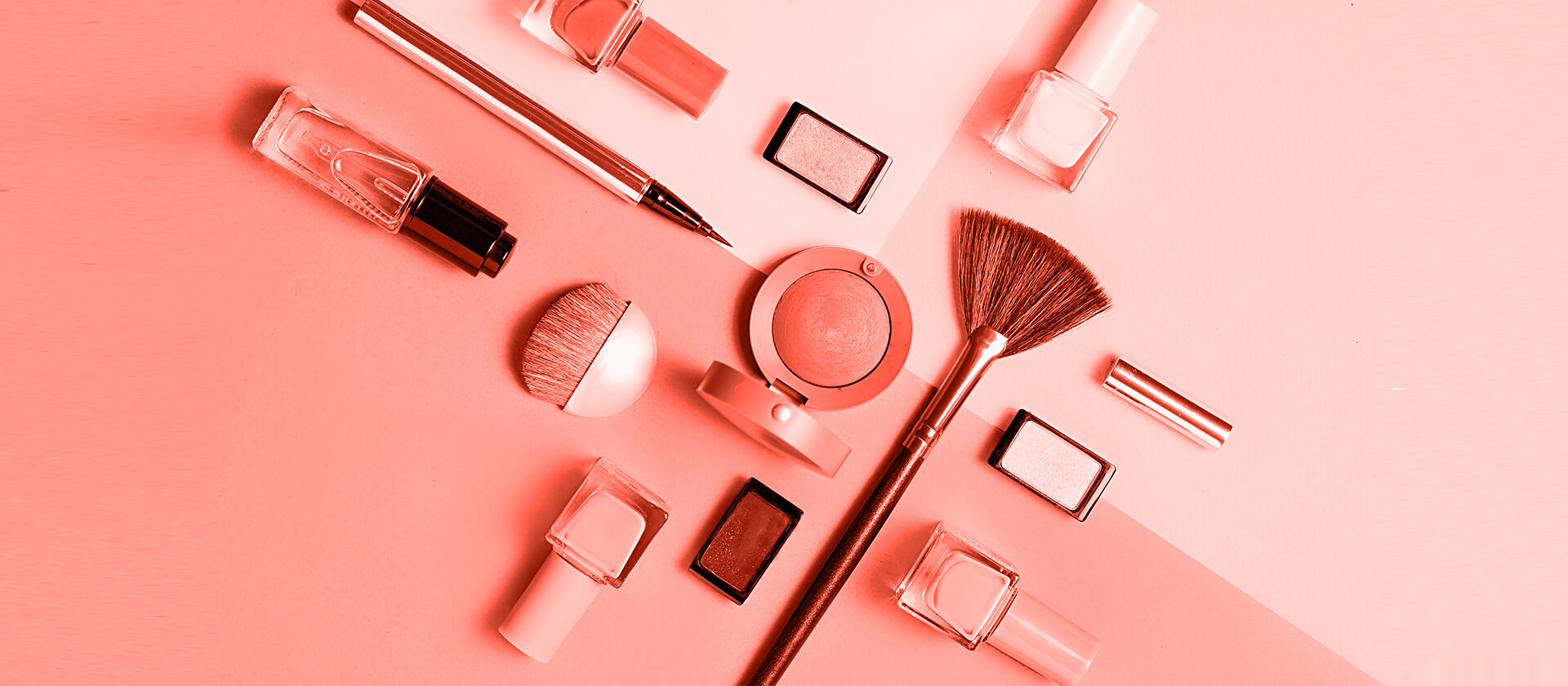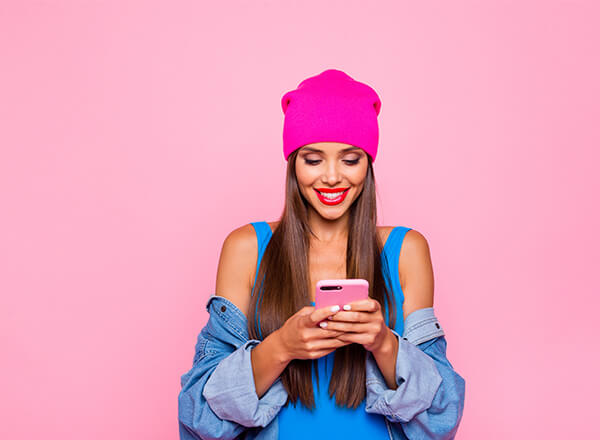Want a heads up when a new story drops? Subscribe here.
Can small cosmetic brands compete with industry giants in the beauty industry? Let’s look at a few eye-opening stats:
- 96% of beauty brands have a social media account (Talk Walker)
- 63% of consumers trust a brand with an Instagram account more (Khoros)
- Over half of consumers want to buy products that reflect age in a positive light (Forbes)
- 70% of US consumers aged 19-29 would rather use organic products (Statista)
- Two thirds of men in the US use skincare products (Forbes)
- Teenagers spend $44 billion per year on beauty products (Stella Rising)
So, what does this tell us?
- Beauty brands should not accent on the age factor in their promo campaigns but should rather focus on how their products help people take good care both of their skin and health.
- New emerging audiences such as men and teenagers are spending more on beauty products.
- And finally, social media is a necessary part of any marketing strategy.
Of course, not everyone can afford to partner up with one of the Kardashians or is, in fact, a Kardashian. However, there are many more budget-friendly and sometimes, perhaps, even more effective ways to boost your brand awareness and increase sales like clever social media initiatives, content marketing tactics and omnichannel campaigns.
Below you can revise 9 great ad campaigns of top beauty brands. Skim through the important takeaways we’ve listed for you and consider which one of those would be a proper fit for your company culture and products.
Table of Contents
Glossier: Anyone Can Be an Influencer
What’s the problem with social media?
– Everyone is on social media.
What’s the best thing about social media?
– Everyone is on social media.
It can be pretty hard to make your brand stand out on these platforms. Moreover, renowned beauty influencers charge thousands of dollars for a single sponsored post.
However, you should keep in mind that hiring a top-tier influencer doesn’t necessarily translate into increased sales. In fact, 70% of millennials’ purchasing decisions are influenced by their peers.
On the other hand, micro influencers (ones having up to 10k followers) have the highest engagement rates according to a survey conducted by InfluencerDB.
So, what does Glossier do? It sees its customers as influencers. The company regularly features user generated content (mostly on Instagram) and has built a strong community of consumers.
They are also known for listening to what their clients want and creating exact products based on these findings.
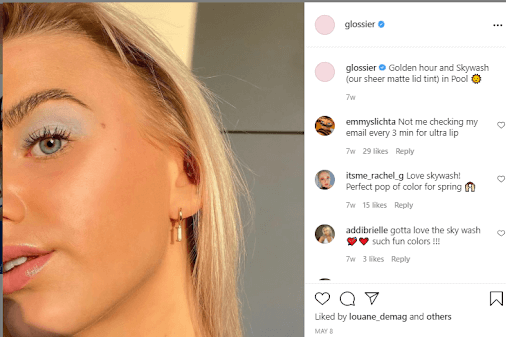
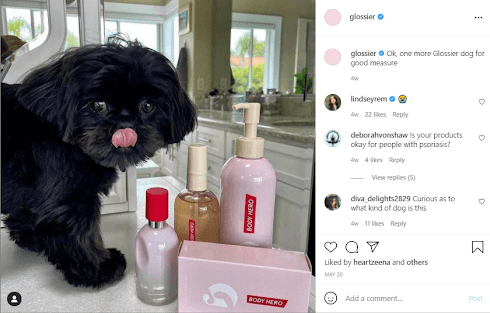
One important thing to note is that prior to launching Glossier in 2014, the founder Emily Weiss had worked on a beauty website called The Gloss for about 4 years. That meant a deep understanding of the target audience, their challenges and what they looked for in a brand.
So before you snatch their tactic and attempt to turn your customers into brand ambassadors, make sure you have a clear understanding of who your customers are. Otherwise, it can be very easy to miss the mark.
L’Oreal: the Use of AR
We all know L’Oreal’s catchy slogan: “Because we’re worth it.” However, this seasoned beauty brand has just recently embraced a marketing tactic that presents them competitive advantage over younger and, arguably, more innovative brands.
In 2018 L’Oreal acquired ModiFace, a market leader in augmented reality. This strategic move allowed the beauty company to “provide a truly immersive experience” for their customers.
L’Oreal is now offering try-on mirrors in physical stores and AR options on social media where users can explore and try out products before they even purchase them. This is especially useful for products like hair dye for instance.
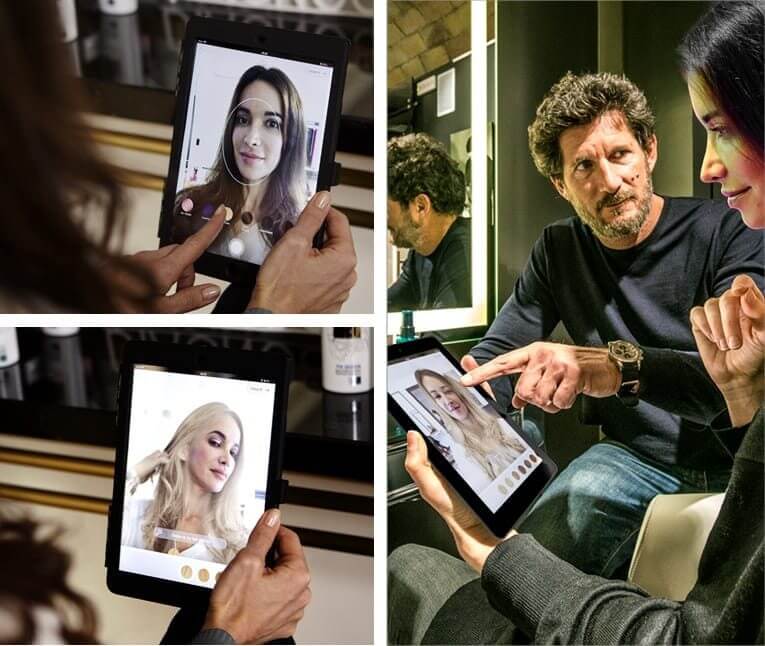
L’Oreal
They also introduced a line of “virtual makeup”, or more commonly known as filters which people can use on social media, but also platforms like Zoom, Skype and Google Meet.
Although there are doubts whether the cost of something like this is really viable in the beauty industry, last year has certainly moved us further in the use of online platforms. On the other hand, L’Oreal’s virtual beauty campaign showed some promising results. In 2019, a year after they acquired the ModiFace app, L’Oreal’s sales grew by 8%, largely due to an increase in e-commerce sales.
And even if you don’t have the budget to invest in high-tech innovations, L’Oreal’s example is still a good reminder that a positive online experience and a personalized approach matter more than ever before.
NYX: a Fun Competition for Makeup Experts
Contests are a great way to boost engagement on your social media. They create a real buzz around your brand. A good contest would have an interesting premise and a tempting reward.
One of the longest-standing contests in the beauty industry is NYX Face Awards which has been held annually ever since 2012.
NYX Face Awards gathers beauty vloggers, who are encouraged to create the best makeup look and record the creative process behind it. The winner receives a solid cash prize.
If you wonder why this industry contest is so popular, just imagine the vast amount of truly incredible projects that you can see there. The event reveals some real natural-born talents, who are a sheer pleasure to watch while working.
The finalists are shortlisted by social media users, so this also means a great brand awareness boost for the company that organizes the event.
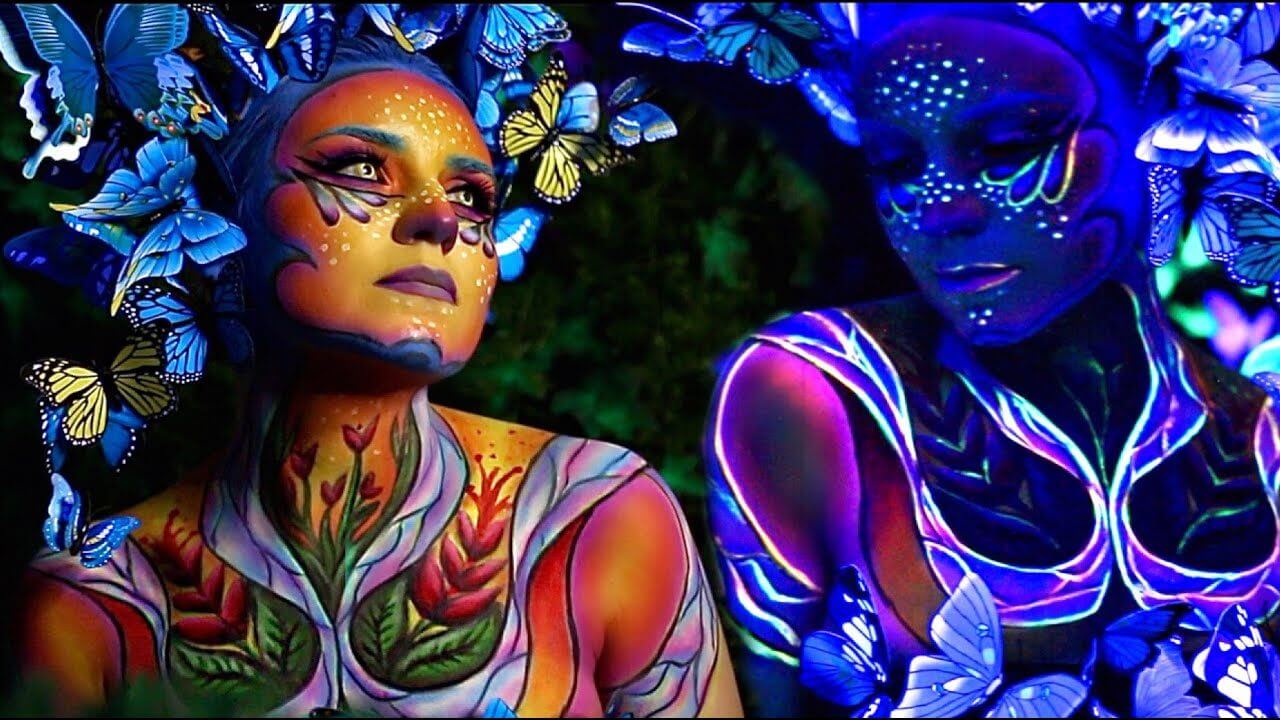
NYX Face Awards is a great example for a marketing campaign with a targeted approach to a more narrow audience. Many people use NYX products, but creating a platform for makeup artists helps to position this brand as prestigious and professional. And in a world where plenty of their competitors are targeting “ordinary” people who simply want to achieve a natural, no-makeup look, this is a good way to stand out.
Dove: Positive Affirmations
Empowerment is such a buzzword in modern-day marketing, but few brands pulled it off as successfully as Dove.
Back in 2004, they launched a marketing campaign called Real Beauty with the aim of rebuilding women’s confidence in her natural looks after decades of setting up unrealistic aesthetic standards in the beauty industry.
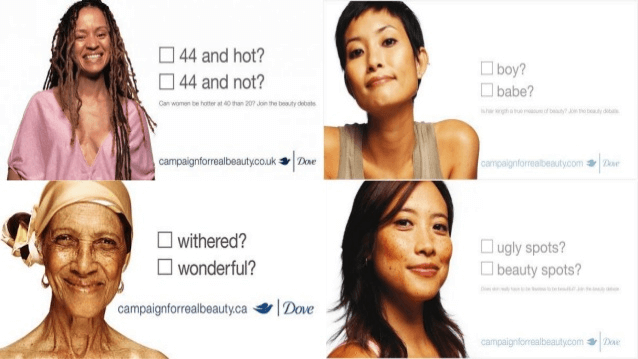
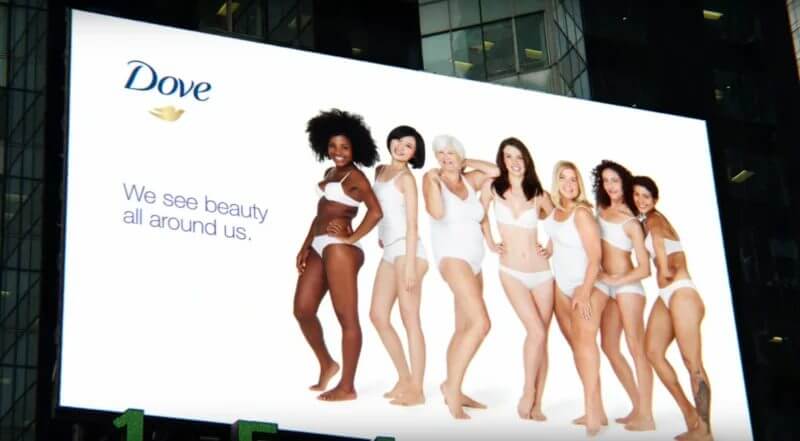
With an idea as powerful as that, the campaign became a success, boosting Dove’s sales by $1.5 billion in the first 10 years, and making Dove’s soap the most popular soap brand in the US.
From billboards with tick boxes showing the power of positive perceptions, to the 2013 Real Beauty Sketches which became the most-watched video ad of all time — the campaign’s powerful messages have stood the test of time.
https://www.youtube.com/watch?v=litXW91UauE
What you can learn from Dove’s example is that a clear mission, vision and values, are integral parts of a brand identity, no matter how “mundane” the product itself is. Instead of selling soap bars and shampoos, Dove spread timeless messages about seeing the beauty in ourselves as we do in others, celebrating diversity and uniqueness.
Rimmel: Pick a Cause
The previous example is a great one to show how to incorporate a sense of mission into your overall marketing strategy. But creating a specific campaign often requires a specific cause.
A more recent example is Rimmel’s 2018 campaign #IWillNotBeDeleted, which was aimed at addressing the problem of cyberbullying. The company commissioned a survey which suggested that one in four women aged 16-25 have experienced cyberbullying (which also often caused them to delete photos from their social media, hence the name of the campaign).
https://www.youtube.com/watch?v=n1kF6EsmkjQ
In a series of YouTube videos brand ambassadors such as Cara Delavigne, Rita Ora and bloggers like Ewa Grzelakowska have shared their experiences of cyberbullying. The campaign attempts to raise awareness of cyberbullying and how it affects women regardless of their status or looks.
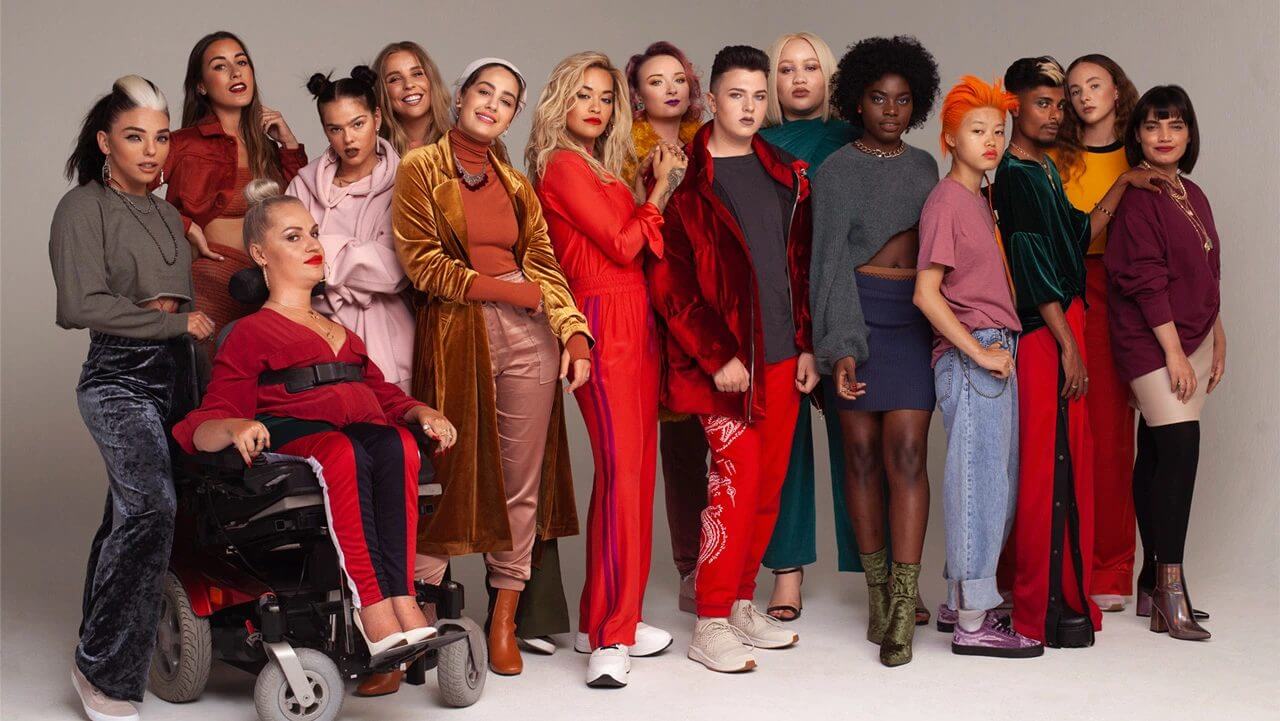
Fenty Beauty: Inclusivity Matters
Many brands have used models of various skin colors to promote their products, but the beauty company founded by Rhianna in 2017 took this initiative to a whole new level.
Interestingly enough her brand Fenty Beauty owes its success not that much to its famous founder but to the cause it stands for.
Fenty Beauty offers 40 (now 50) unique foundation shades in their attempt to properly address the needs of people of different skin colors. The idea behind this huge project was to be able to offer the perfect foundation to each Fenty Beauty customer. They wanted to eliminate the need of mixing different shades to come up with your exact skin tone color.
Fenty Skin are constantly improving their product line to ensure that the company’s best selling beauty products are even more closely tied to the brand’s mission: “Beauty for all”.
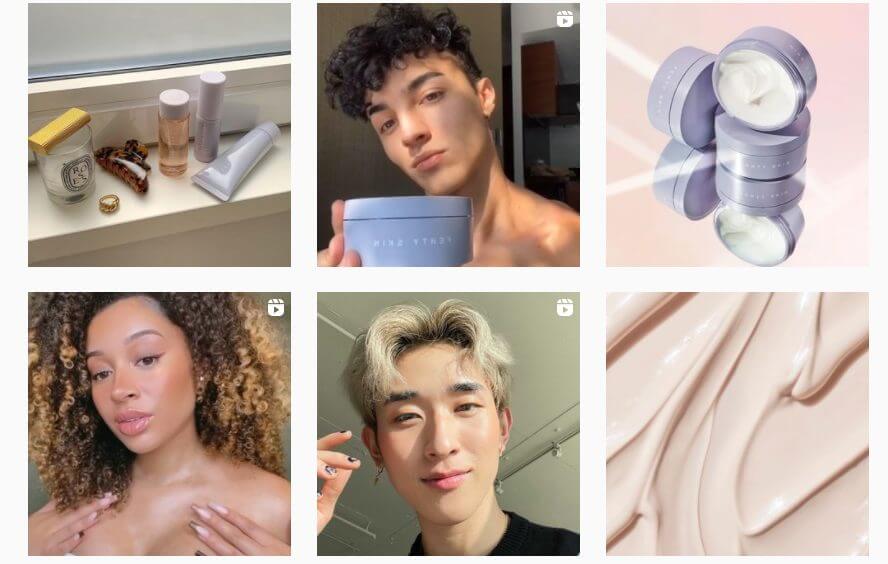
It’s a simple hook, but effective. It shows potential customers that the brand really cares about creating the perfect, tailor-made experience.
And in a world where significant strides are still being made to ensure equal representation for all, the brand’s commitment to representing, but also educating people on how to take care of different types and shades of skin is certainly much admirable.
Aesop: Designed to the Nines
When it comes down to beauty products we are all about the specific ingredients and the beauty recipe behind the actual products. But sometimes the exterior and the packaging is just as important to earn your customers’ attention and favor.
Have you come across Australian beauty brand Aesop? If you have ventured into one of their amazing shops, you most certainly still have a clear memory of the unique experience.
These gorgeous shops often resemble art galleries and perfectly incorporate the recognizable Aesop product packaging: minimalistic, elegant and focused on the actual content.
Because shopping in a physical store is such a great experience with this brand, they decided to launch a website called Taxonomy of Design, where you can explore gorgeous Aesop stores around the world, as well as learn about the design and architectural story behind them.
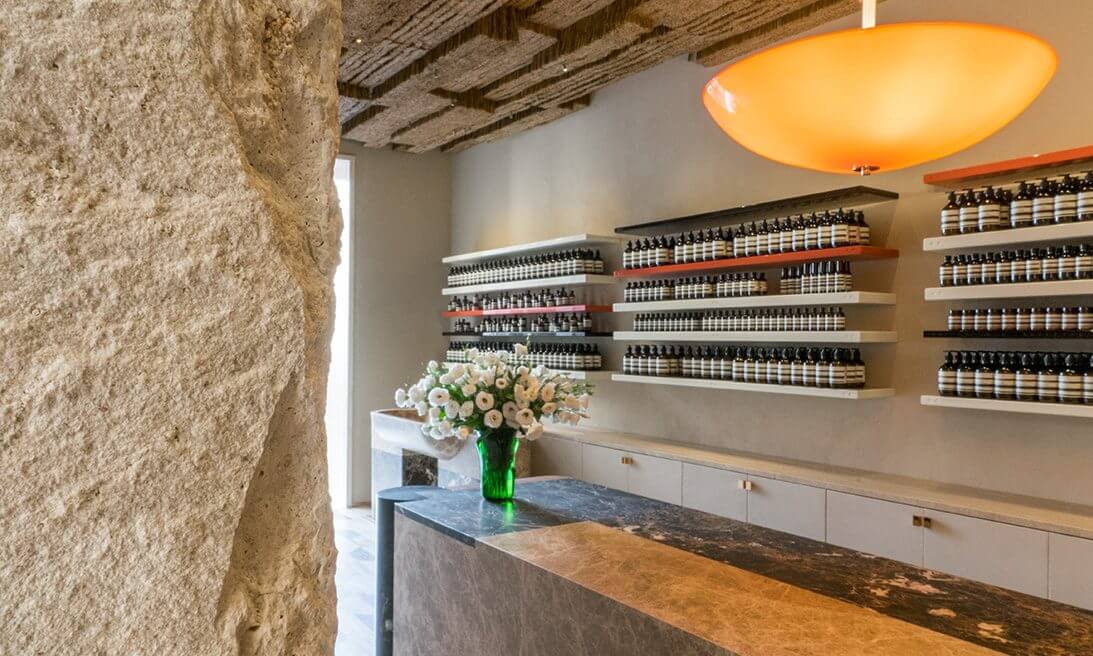
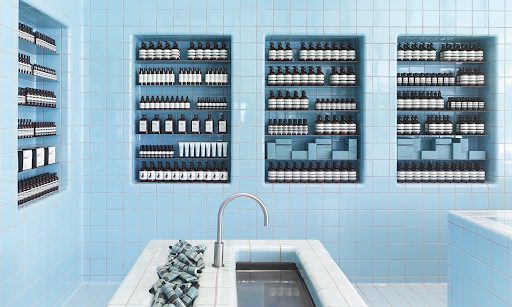
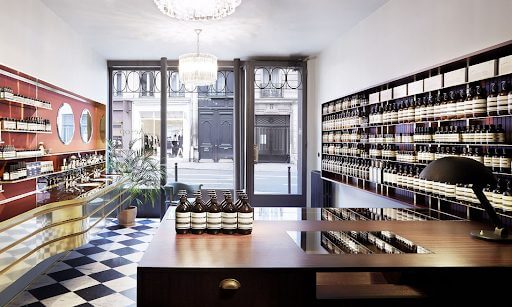
Whether it’s through product packaging, interior store design or digital marketing assets — the aesthetic appeal of your project really matters in the beauty industry. A strong sense of brand identity will help you create a memorable brand image (just like Aesop did).
And of course, make sure you have a reliable design service by your side to help you turn your vision into a reality.
Birchbox: Copywriting Is not Dead
Most beauty brands are known for their gorgeous and inspirational Instagram feeds, and quite helpful YouTube tutorials. But few of them focus on the traditional, written content.
Well, Birchbox is a delightful exception. The brand has its own online publication, Birchbox Magazine.
From Birchbox’ very inception its founders had a strong focus on content creation, and insisted on writing articles that were educational instead of simply promotional. Their content ranges from tips on storing your makeup to interviews with inspiring women from all walks of life, and it is a pleasure to immerse into.
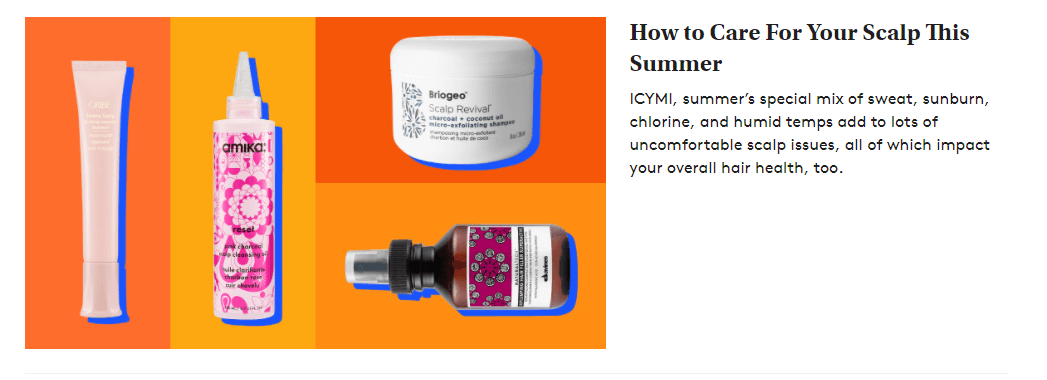
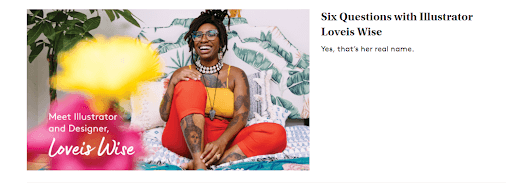
Of course, it’s important to note that Birchbox also has a slightly different business model than the rest of companies in the beauty industry.
Birchbox is a subscription-based supplier of beauty and cosmetic products. To sign up for their program you’re required to fill out a survey. Then you are sent 5 samples to help you discover the best products for your needs.
Given their business model it makes perfect sense that a centerpiece of their communication strategy is educating their target audience. Do you think that your customers would benefit from more concentrated article-based guidance to have a better understanding of your products?
Colourpop: Everyone Likes a Giveaway
Finally, we come to one of the oldest marketing hacks in the industry: the joy of a freebie!
Although it’s tempting to assume that people will immediately flock to your brand as soon as you give them a taste of it, this sadly isn’t always the case. Just think of all the times you signed up for a free trial, for the sake of making a single purchase. Or do you remember how many times you got a free sample at a store, but never purchased the product yourself afterwards?
If you decide to run a giveaway campaign, Colourpop is the beauty brand you ought to look up.
Colourpop sells beauty products at affordable prices and is best known for its eye shadow palettes and liquid lipsticks. Obviously geared towards the younger audience, Colourpop focuses its attention on social media, where it outperforms major, celebrity-founded brands like KKW or Kylie Cosmetics.
But why is that? Well, they really step up on those giveaways. Similar to Glossier, Colourpop maintains a strong connection with its community of clients. However they prioritize regular partnerships with micro-influencers who promote the brand’s giveaway campaigns.
Naturally, the sponsored posts is another trick they use to popularize their giveaways. Those would translate into a growing number of organic mentions, and paired up with the influencers’ impact – Colourpop faces significant brand visibility spikes.
In October 2019, their giveaway post (see below) generated a whopping 75,000 comments. The reward consisted of an eye shadow palette and a $50 gift card for 20 lucky winners. You can immediately see how this relatively low investment really paid off for the brand.
But there is another thing you should never underestimate when trying to replicate their success – they really have a solid understanding of their target audience.
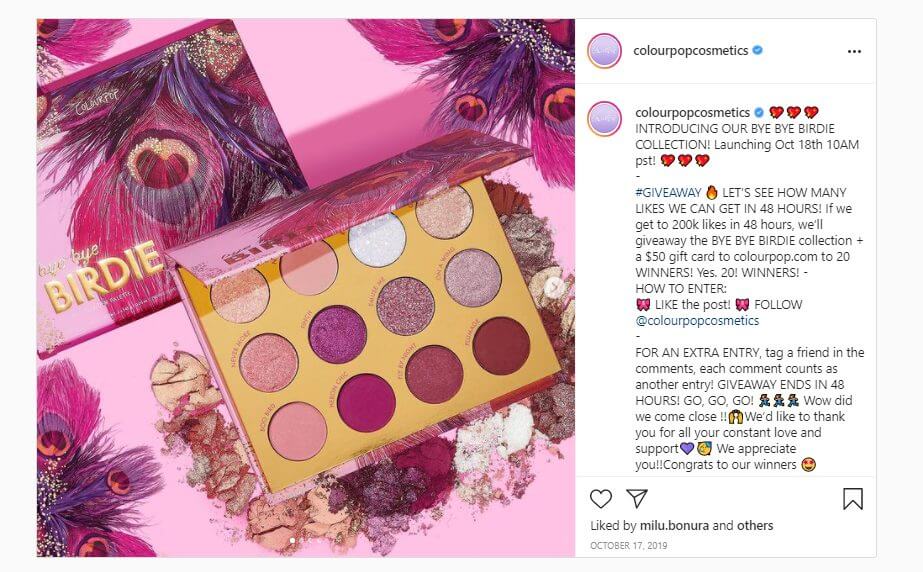
So our advice would be to carefully organize your next giveaway campaign. Create enough of an incentive for your customers to take part in it, and weigh out what the giveaway will bring to you.
Conclusion
Hopefully, this list has given you plenty of food for thought for your next marketing campaign. Whether you’ll opt for a user engagement campaign on Social Media, or you’d launch a brand awareness project instead, you should always aim to be authentic and address the needs/problems of your target audience.
It’s 2021, so forget about stereotypes and unattainable beauty standards. Whoever your clients are, they’re real people. And that’s the real beauty of it!
—
Danica is a writer at ManyPixels, an on-demand graphic design company, delivering high-quality, affordable and scalable design solutions to businesses across the globe.


